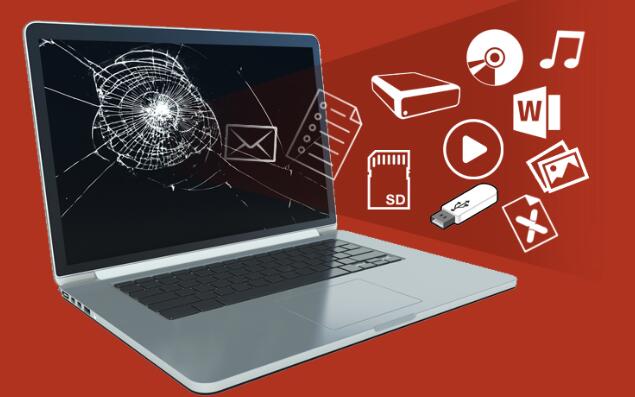When a computer “dies,” it typically means it fails to power on, boot up, or function normally. The issue could range from hardware failures to software corruption. Understanding the underlying cause is crucial for determining the appropriate recovery method.
Common Causes of Computer Failure:
Power Supply Issues: A malfunctioning power supply can prevent a computer from powering on.
Motherboard Failures: Problems with the motherboard, such as damaged capacitors or burned circuits, can halt a computer’s operation.
Hard Drive Failure: Mechanical failures, bad sectors, or logical issues on the hard drive can make data inaccessible.
Corrupted BIOS: A corrupted BIOS can stop a computer from booting.
Overheating: Excessive heat can damage internal components and cause system failure.
Software Issues: Corrupted operating systems or critical system files can prevent booting.

Initial Diagnosis
Before attempting recovery, diagnose the issue to understand the extent of the damage.
Basic Troubleshooting Steps:
Check Power Supply: Ensure that the power supply is functioning. Check cables, connections, and the power button.
Listen for Beep Codes: Many motherboards emit beep codes that indicate specific hardware issues.
Inspect Hardware: Look for any visible signs of damage or disconnections inside the computer case.
Test Components: Swap out components like RAM or the power supply to rule out failures.
Data Recovery Methods
If the computer is dead but the hard drive appears intact, you can attempt to recover data using several methods.
1. Remove the Hard Drive:
Desktop Computers: Open the computer case, disconnect the hard drive, and remove it.
Laptops: Remove the hard drive by opening the laptop’s access panel or, if needed, disassemble the laptop carefully.
2. Use an External Enclosure or Dock:
External Enclosure: Place the removed hard drive into an external hard drive enclosure compatible with its interface (SATA or IDE).
Docking Station: Alternatively, use a hard drive docking station to connect the drive to a working computer via USB.
3. Connect to Another Computer:
Direct Connection: Once connected via an enclosure or dock, the hard drive should be detected as an external drive on a working computer.
Access Data: Browse through the drive to copy important files to another storage device.
Advanced Recovery Techniques
If the hard drive is not recognized or inaccessible, you might need to use more advanced recovery techniques.
1. Data Recovery Software:
Use Data Recovery Tools: Programs like Recuva, EaseUS Data Recovery Wizard, or Disk Drill can scan the drive for recoverable files and attempt to restore them.
Scan Options: Perform a quick scan for deleted files or a deep scan for lost partitions or damaged file systems.
2. Professional Data Recovery Services:
When to Seek Professional Help: If the hard drive is physically damaged, making unusual noises, or if you are unable to access the data through software, professional data recovery services are recommended.
Services Offered: Professionals have specialized tools and cleanroom environments to handle severe cases of hard drive damage, including platter swaps or circuit board repairs.
Preventive Measures
To avoid future data loss, consider implementing these preventive measures:
1. Regular Backups:
Backup Solutions: Use external hard drives, cloud storage, or network-attached storage (NAS) for regular backups of important data.
Backup Frequency: Establish a schedule for automatic backups to ensure data is consistently saved.
2. Hardware Maintenance:
Preventive Care: Keep your computer clean, ensure proper ventilation, and periodically check hardware components for wear and tear.
Power Protection: Use surge protectors or uninterruptible power supplies (UPS) to safeguard against power surges and outages.
3. System Updates:
Regular Updates: Keep your operating system and software up to date to prevent vulnerabilities and reduce the risk of corruption.
About us and this blog
Panda Assistant is built on the latest data recovery algorithms, ensuring that no file is too damaged, too lost, or too corrupted to be recovered.
Request a free quote
We believe that data recovery shouldn’t be a daunting task. That’s why we’ve designed Panda Assistant to be as easy to use as it is powerful. With a few clicks, you can initiate a scan, preview recoverable files, and restore your data all within a matter of minutes.

 Try lt Free
Try lt Free Recovery success rate of up to
Recovery success rate of up to









